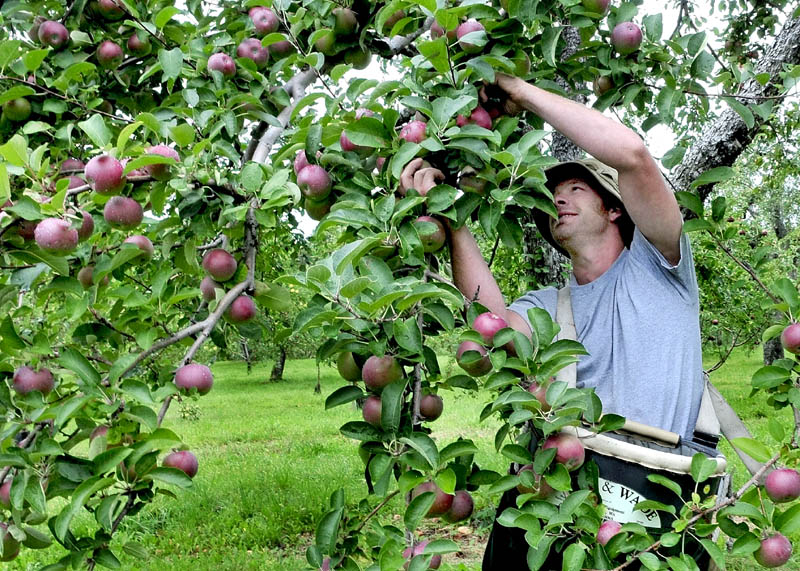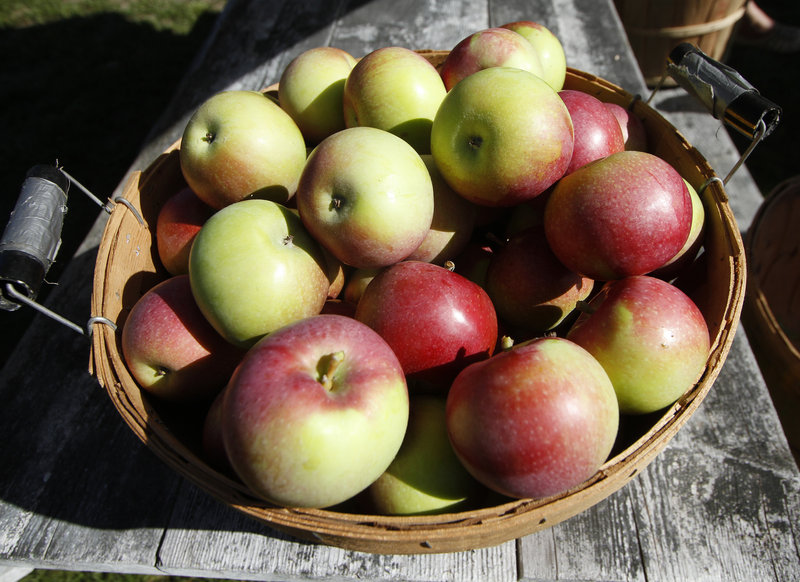MONTPELIER, Vt. – At the mercy of Mother Nature, apple growers in northern New England are often pessimistic at the start of the season. So when an early spring was followed by a frost, they watched closely in the coming months for signs of damage.
Instead, they have been pleasantly surprised.
Turns out, not only was the damage not nearly as bad as in some big apple states like Michigan, but this year’s apples are expected to have more intense flavor, said Terry Bradshaw, president of Vermont Tree Fruit Growers Association.
“By all the textbooks, we shouldn’t have any apples in the state,” he said.
The news hasn’t been all good — the yield is expected to be down about 10 to 20 percent. Still, Bradshaw said, “people are fairly optimistic about the season.”
Low-lying areas in Vermont, Maine, New Hampshire and northern New York or orchards surrounded by dense stands of trees were more susceptible to the frost that hit in March and then at the end of April, killing some flower buds, including a number at Highmoor Farms, the University of Maine’s agricultural experiment station in Monmouth.
“Everyone was (affected) to some extent, but where an orchard only lost 10 percent of their flowers, they’re not likely to notice,” said Renae Moran, tree fruit specialist for the University of Maine.
Around the region, damage was scattered. It depended on where the apple trees were in their development at the time of the cold weather.
“Everyone has apples. I haven’t heard of anybody that’s been wiped out. It’s just that some of these places will have less than they usually do,” said Gail McWilliam Jellie, director of the Division of Agricultural Development for the New Hampshire Department of Agriculture.
The region lucked out because the heat wave in March wasn’t as warm as in other areas. A few more days, and the apple crop could have been ruined.
“Our picture looks dramatically differently certainly than Western New York or the Hudson Valley or other locations,” said Kevin Iungerman, extension associate with Cornell University Extension, who works in Cornell’s Northeast New York fruit program. His region includes the upper Hudson and Champlain valleys of New York from Albany north to Quebec.
In northeastern Vermont, a state that produces on average about 900,000 bushels a year, the owner of Dolly Gray Orchard in Hardwick was surprised at the outcome despite the erratic spring.
“For some reason, I’ve got a nice crop this year,” said Guy Patoine.
Nearby Burtt Orchards in Cabot didn’t lose blossoms from frost because it’s a colder orchard that gets a later start. But hail did cause some surface damage in mid-July, said Greg Burtt.
Hackett’s Orchard in the milder South Hero on Lake Champlain says this year is shaping up to be a nice crop.
Still, some orchards in the Northeast could be down half a crop. Another result of the early heat wave is that the fruit will be ripe ahead of schedule, maybe 10 days early, said Bradshaw.
Nonetheless, “Every time I talked to someone, everyone’s more pleasantly surprised with what’s out there,” Bradshaw said.
Copy the Story Link
Send questions/comments to the editors.




Success. Please wait for the page to reload. If the page does not reload within 5 seconds, please refresh the page.
Enter your email and password to access comments.
Hi, to comment on stories you must . This profile is in addition to your subscription and website login.
Already have a commenting profile? .
Invalid username/password.
Please check your email to confirm and complete your registration.
Only subscribers are eligible to post comments. Please subscribe or login first for digital access. Here’s why.
Use the form below to reset your password. When you've submitted your account email, we will send an email with a reset code.